June 14, 2018, Oley, PA-
That moniker above could apply to this little farm, where I am camped, until tomorrow morning. It more immediately applies, however, to Valley Forge, where I spent most of the day. Like Steamtown and Philadelphia’s Independence Hall, admission to Valley Forge is free of charge. The value of the stories it tells, though, is priceless, eternal.
The day will be recounted in three parts: This post will focus, as stated, on the battlefield and the main encampments, which also feature most of the memorials. Part two will focus on the Washington Chapel. Part 3 will feature Washington’s Headquarters.
For exploration of the encampments, I chose the Joseph Plumb Martin Trail, named for a private in the Continental Army, who kept a journal of his experiences during the terrible winter of 1777-78.
The first stop along that trail takes in the Muhlenberg Brigade’s encampment and redoubt. The commander of the Virginia Line, of the 8th Brigade, was Gen. John Peter Muhlenberg.
Several cabins were open for us to check out.
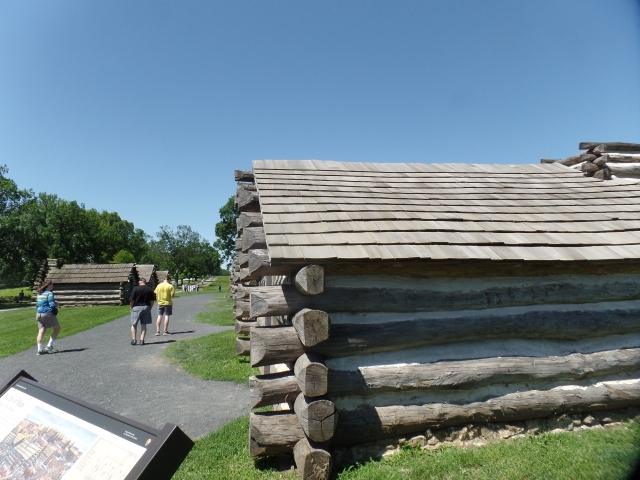
This berm is an example of the cover used by Continental troops, to guard against any British cannon fire.
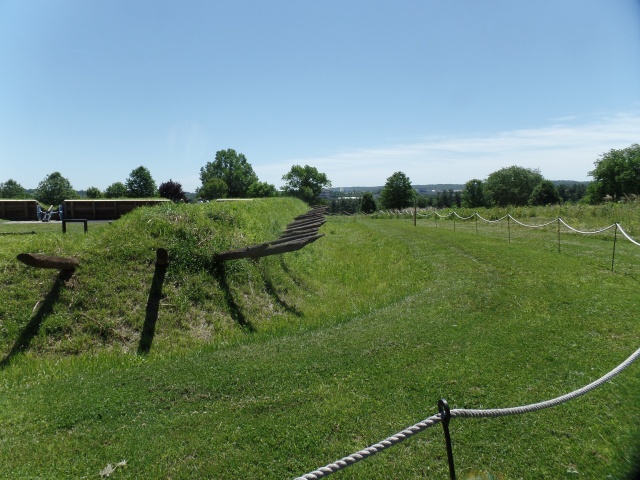
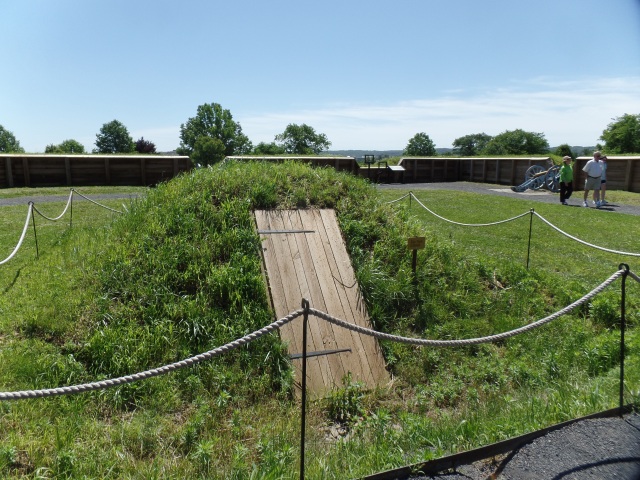
Inside another cabin, the only source of heat for the people billeted here is shown. Some cabins had not only the soldiers, but family members who followed the Army on its mission.
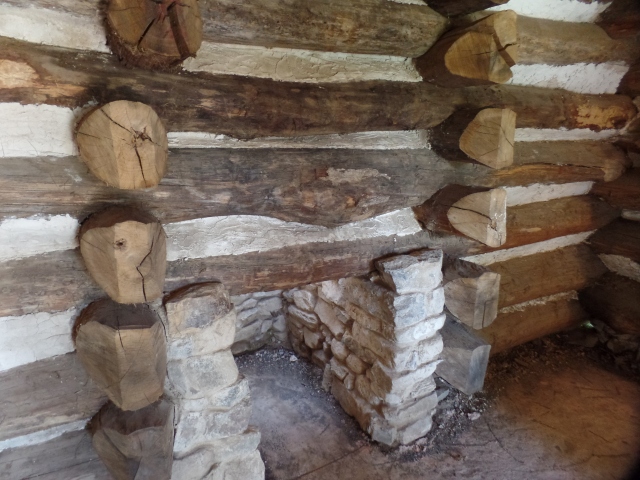
Here is a longer view of the encampment.
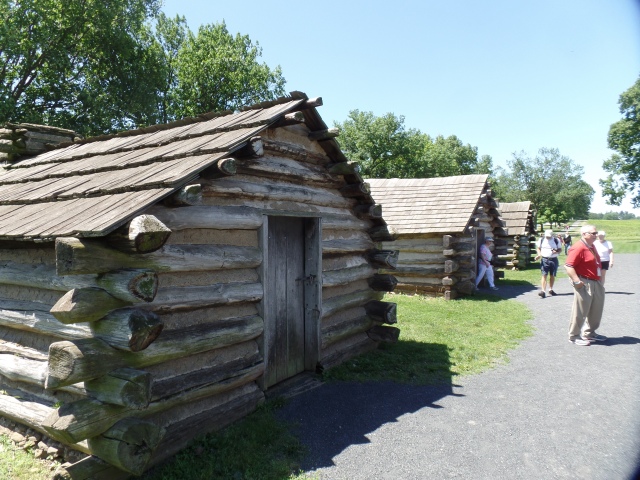
This signboard explains the situation to which I referred above. Some cabins had not only men, women and children, but household animals, as well.
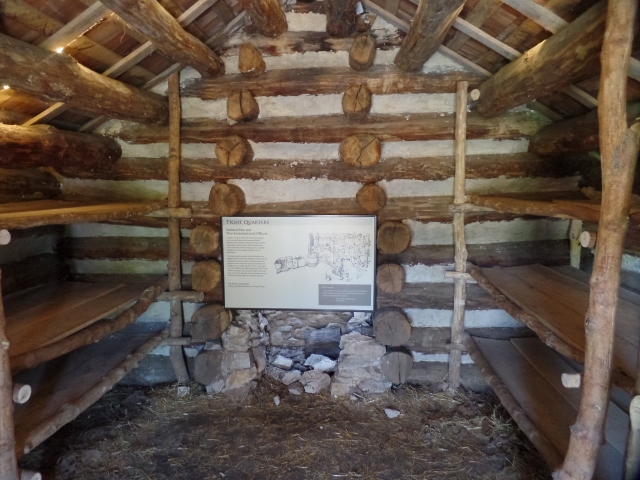
Here is a glimpse of Washington Memorial Chapel, a mile or so to the east of Muhlenberg encampment and the National Memorial Arch.
Moving further north, I found this memorial to the soldiers from Massachusetts, who served at Valley Forge.

Here is the National Memorial Arch, honouring all who served the cause of independence.
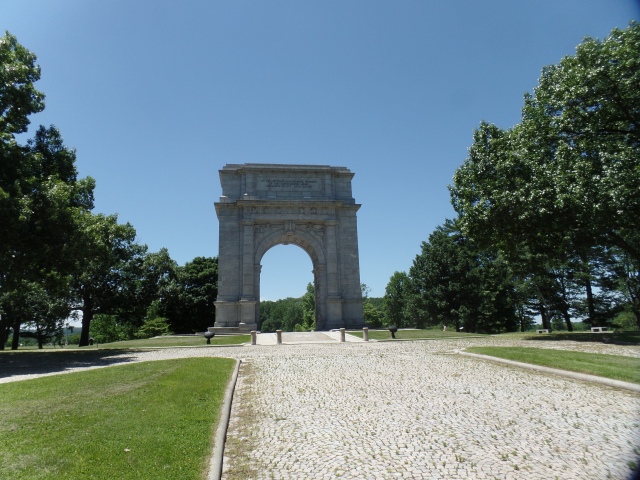
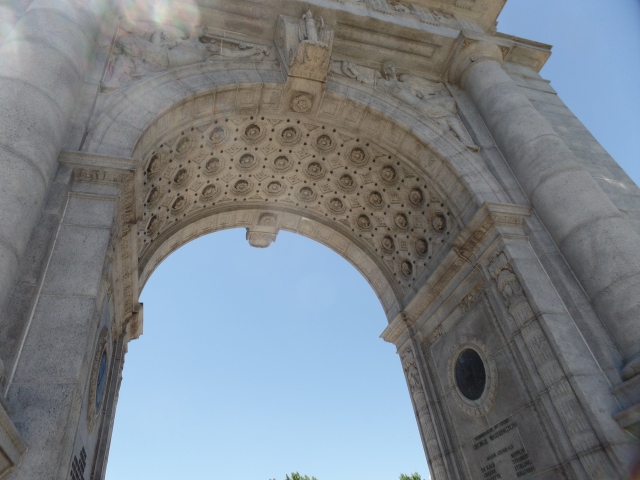
This small encampment, north of the present-day Arch, was commanded by Gen. Enoch Poor, of the New Hampshire Regiment.
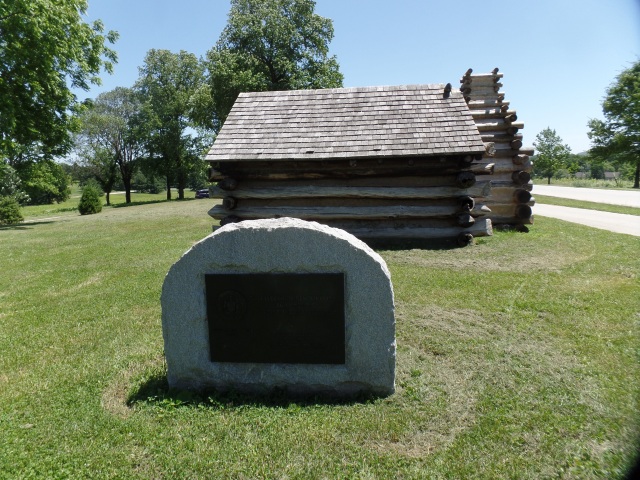
Here are the Pennsylvania Columns, which honour American Revolutionary War generals. At the base of each column are bas-relief busts of Colonel William Irvine and Adjutant General Joseph Reed.
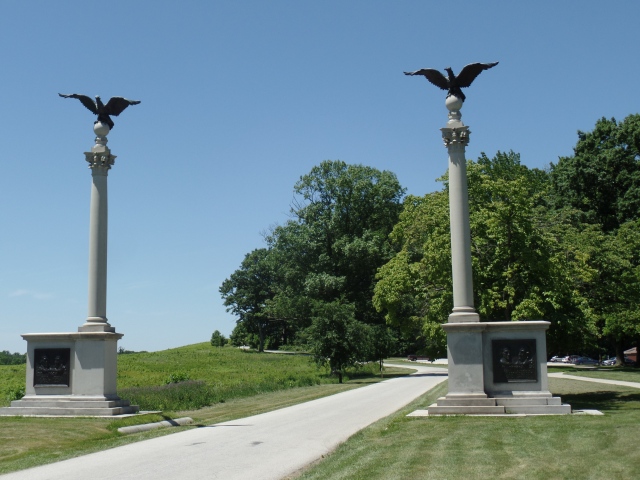
Here’s a glimpse of Wayne’s Woods, named for General Anthony Wayne, who unsuccessfully tried to invade Canada, in 1775. He didn’t encamp here, but the woods were named for him, anyway. Today, the woods are a popular picnic area.
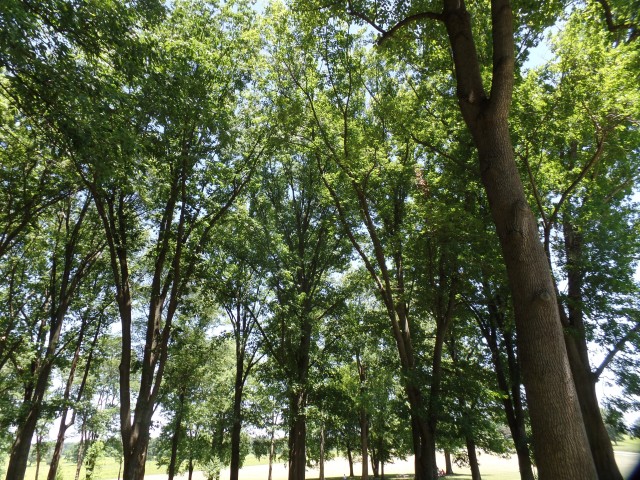
This marks the site where General Washington pitched his sleeping tent, when he entered Valley Forge, in December, 1777.
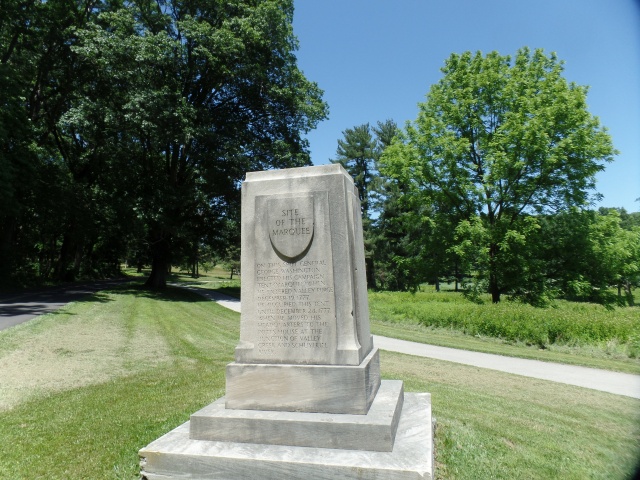
The next two photos show Artillery Park, where Continental artillery was stored and repaired.
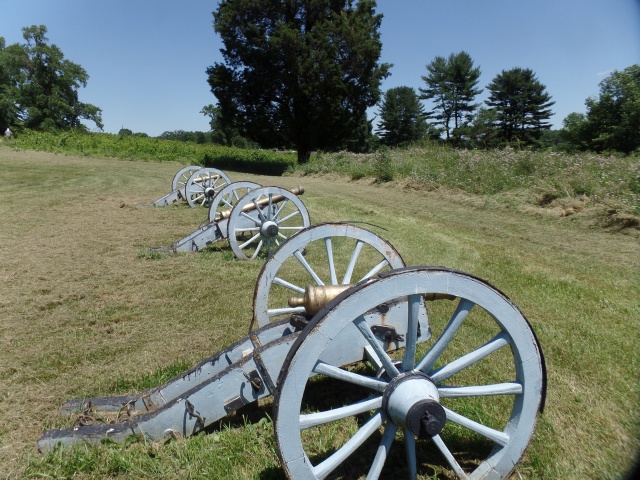
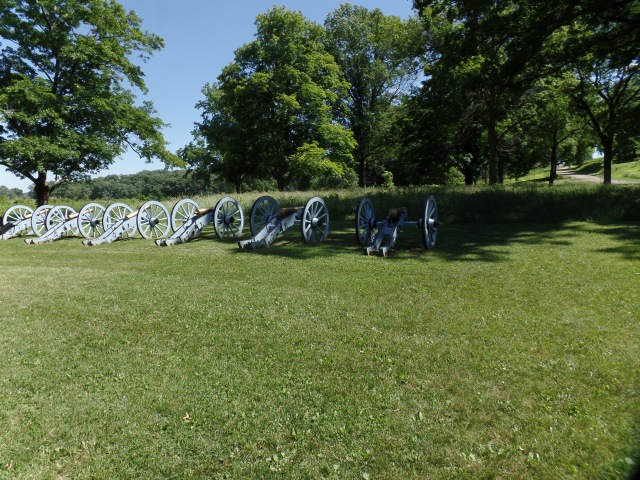
Here is a statue of the great Prussian general, Baron Wilhelm von Steuben, who instilled unity and discipline in the Continental Army, during its time at Valley Forge.
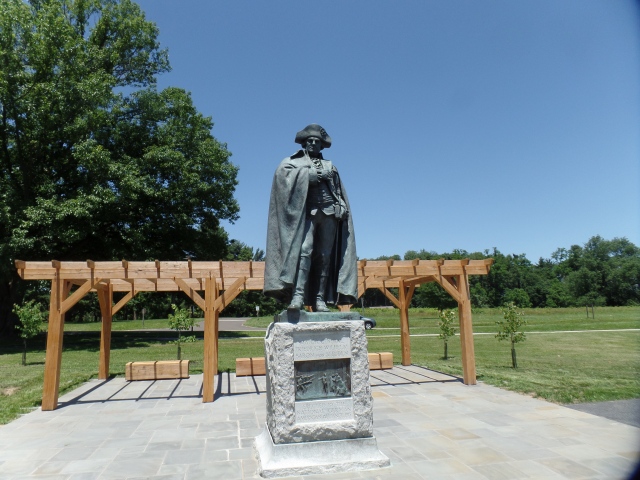
This house served as the quarters of General James Varnum, commander of the Connecticut and Rhode Island Brigades. He shared the home with the Stephens family, who owned it-paying rent to David Stephens, during his stay at Valley Forge.
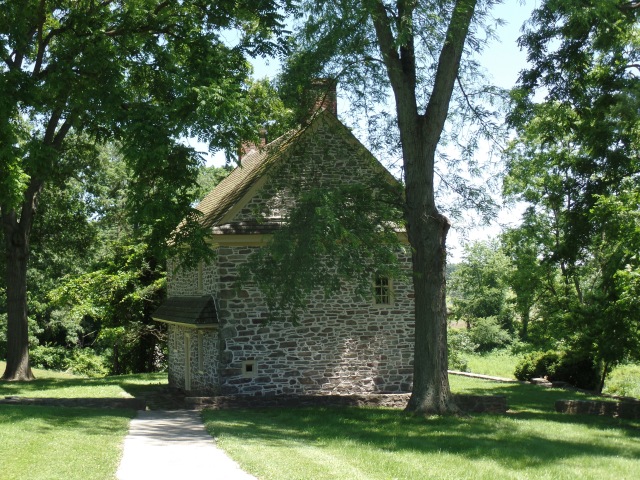
Although my visit took place in the heat of early summer, a sense of what was endured by the troops and local residents alike was easily conveyed. My tour of the encampments ended here, and the focus now became Washington Memorial Chapel, the subject of Part 2 of this set of posts.

I love to travel and sight see I’m so envious of you!!! 😃
LikeLiked by 1 person
May your day come, and soon.
LikeLiked by 1 person
So much history!! I don’t know how you managed to see the whole place in a single day…
LikeLiked by 1 person
I just kept at it.
LikeLike
That is so interesting. I love to travel too! Blessings on your journey.
LikeLiked by 1 person
Lord, do you ever love to travel. Maybe I’ll see you out here, between now and next summer.
LikeLike
My computer is taking a long time to download the photos.
I will check it again later.
LikeLiked by 1 person
Hope it has worked out for you, Angy!
LikeLiked by 1 person
My parents took me there when I was a child.
LikeLiked by 1 person
Lucky boy! I am always gratified to see families at these great parks. In 2017, I had the honour of meeting a father and his 14-year-old son, touring Antietam, and then running into them at Stonewall Jackson House, two days later.
LikeLiked by 1 person
It’s important to expose children to things. It broadens their perception of reality
LikeLiked by 1 person
Amen!
LikeLiked by 1 person